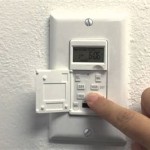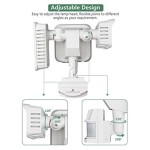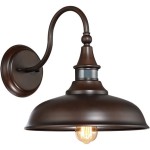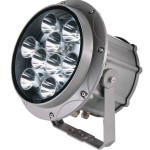Essential Aspects of Adding PIR Sensors to Outdoor Lights
Motion-activated outdoor lighting can greatly enhance security and convenience for homes and businesses. By adding a passive infrared (PIR) sensor to an outdoor light, you can automate the lighting, providing illumination only when needed. This can deter potential intruders, reduce energy consumption, and improve the overall functionality of your outdoor lighting system.
In this article, we will explore the key aspects to consider when adding a PIR sensor to an outdoor light. By understanding these essential factors, you can make an informed decision and optimize the performance of your motion-activated lighting system.
Positioning and Coverage
The positioning of the PIR sensor is crucial for effective motion detection. It should be placed at a height that covers the desired detection zone and has a clear line of sight to any potential movement. The coverage area of the sensor varies depending on its design, so it is important to select a sensor with an appropriate range for your specific application.
Sensitivity Adjustments
The sensitivity of the PIR sensor determines how easily it detects motion. Proper adjustment ensures that the sensor triggers only when desired, avoiding false activations. Most PIR sensors have adjustable sensitivity settings, allowing you to customize the detection range and minimize unnecessary lighting.
Time Delay Settings
The time delay setting controls how long the light stays on after motion is detected. This allows you to set the duration of illumination according to your preferences. Shorter time delays can provide instant lighting for security purposes, while longer delays can extend illumination for convenience or safety.
Ambient Light Threshold
Some PIR sensors feature an ambient light threshold setting. This determines the level of darkness required for the sensor to activate. By adjusting this setting, you can prevent the light from turning on during daylight hours, saving energy and reducing light pollution.
Weather Resistance
PIR sensors are typically designed for outdoor use, but it is essential to ensure that the sensor is weather-resistant. The sensor should be rated for the expected temperature range and capable of withstanding moisture and dust. This will ensure reliable operation in all weather conditions.
Power Requirements
PIR sensors require power to operate. Some sensors are wired into the existing electrical system, while others use batteries. Consider the power requirements of the sensor and choose a model that meets your specific needs and installation preferences.
Conclusion
By considering these essential aspects, you can effectively add a PIR sensor to an outdoor light and optimize its performance. Proper positioning, sensitivity adjustments, time delay settings, ambient light threshold, weather resistance, and power requirements will ensure that your motion-activated lighting system meets your security, convenience, and energy efficiency needs.

Can You Add Motion Sensors To Existing Outdoor Lights Led Lighting Info

Can You Add Motion Sensors To Existing Outdoor Lights Led Lighting Info

How To Add Motion Sensor Outdoor Lights With Or Function Doityourself Com Community Forums

Can You Add Motion Sensors To Existing Outdoor Lights Led Lighting Info

Can You Add Motion Sensors To Existing Outdoor Lights Local Electrical Group

How To Wire Motion Sensor Occupancy Sensors

Can You Add Motion Sensors To Existing Outdoor Lights Local Electrical Group
Is It Possible To Add A Single Motion Sensor Set Of Outdoor Floodlights That Are Controlled By Two 3 Way Switches Quora

Can You Add Motion Sensors To Existing Outdoor Lights Local Electrical Group

How To Add A Light Sensor Outdoor Lanterns The Navage Patch
Related Posts







